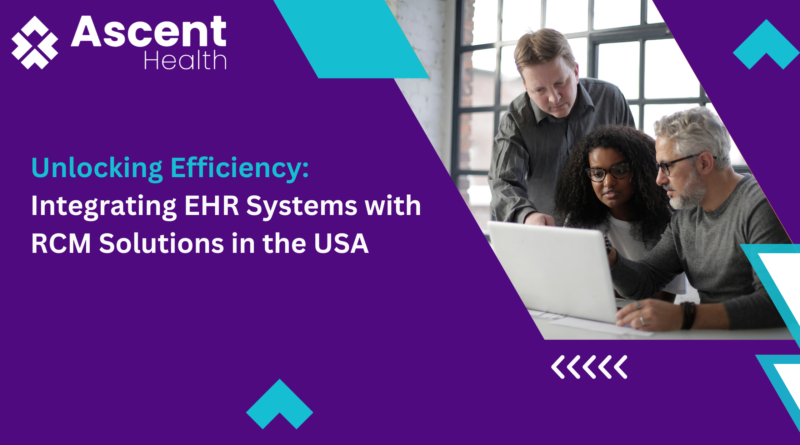Integrating EHR Systems with RCM Solutions in the USA
Let’s start with a little thought experiment, shall we? Picture yourself in a bustling hospital, navigating the labyrinth of corridors with the precision of a seasoned explorer. You finally arrive at your destination—the reception desk. As you hand over your insurance information, you can’t help but wonder: how does all this paperwork magically transform into a seamless billing process? Well, my friend, that’s where the magic of EHR systems and RCM solutions comes into play.
The Art of Integration: EHR meets RCM
In the world of healthcare, Electronic Health Record (EHR) systems are the unsung heroes, storing vast amounts of patient data with the efficiency of a digital librarian. On the other hand, Revenue Cycle Management (RCM) solutions are the financial wizards, ensuring that every medical service rendered translates into timely reimbursement. But what happens when these two powerhouses join forces? Let’s dive in and find out.
The Seamless Symphony of EHR and RCM
Imagine this: you’re a doctor, knee-deep in patient consultations, when suddenly, a notification pops up on your EHR system. It’s a gentle reminder to ensure that the diagnosis and treatment codes are documented accurately. Thanks to the integration of EHR with RCM, you can rest assured that your patient’s journey—from diagnosis to reimbursement—is in safe hands.
Benefits of Integration
- Streamlined Documentation: With EHR seamlessly integrated with RCM, documentation becomes a breeze. Gone are the days of scribbling notes on paper charts—now, everything is neatly recorded in the digital realm, ready to be translated into billing codes with a few clicks.
- Enhanced Accuracy: Say goodbye to billing errors and claim denials. With EHR and RCM working hand in hand, the likelihood of inaccuracies is greatly reduced. It’s like having a built-in spell checker for your medical billing.
- Efficient Workflow: Integration of EHR and RCM streamlines the entire healthcare workflow, from patient registration to payment collection. This means fewer bottlenecks, shorter wait times, and happier patients.
Real-Life Example: A Tale of Integration Success
Let me regale you with a tale from the trenches of healthcare administration. A large hospital in the heart of Chicago was struggling with the cumbersome task of reconciling patient records with billing data. Claims were getting lost in the shuffle, and revenue was taking a hit. But then, they decided to take the plunge and integrate their EHR system with an RCM solution from a top-tier RCM company USA.
The results were nothing short of miraculous. Suddenly, patient data flowed seamlessly from EHR to RCM, like a well-oiled machine. Claims were processed faster, denials plummeted, and revenue soared. The hospital staff breathed a collective sigh of relief, knowing that their financial health was in good hands.
The Human Element: Personalizing the Experience
Now, let’s talk about the human side of things. In the midst of all this digital wizardry, it’s essential not to lose sight of the human touch. Patients aren’t just numbers on a screen—they’re individuals with unique needs and concerns. That’s where patient access services come into play.
The Importance of Patient Access Services
Patient access services are the frontline warriors, guiding patients through the labyrinth of healthcare bureaucracy with empathy and expertise. Whether it’s scheduling appointments, verifying insurance coverage, or answering billing questions, these unsung heroes ensure that every patient receives the care they need, when they need it.
Conclusion: Embracing Integration for a Brighter Future
In conclusion, the integration of EHR systems with RCM solutions represents a significant leap forward in healthcare efficiency and effectiveness. By harnessing the power of technology and the human touch, healthcare providers can streamline their operations, reduce errors, and improve patient satisfaction.
So, my fellow healthcare adventurers, let’s embrace the journey towards integration. Whether you’re a doctor, a nurse, or an administrator, remember that we’re all in this together. By working hand in hand—with our EHR systems, our RCM solutions, and most importantly, with each other—we can create a healthcare ecosystem that is truly transformative.
Now, I’d love to hear from you. What are your thoughts on the integration of EHR and RCM in healthcare? Have you experienced any challenges or successes along the way? Share your stories in the comments below, and let’s continue this conversation together. Until next time, stay curious, stay compassionate, and keep exploring the ever-evolving world of healthcare.

